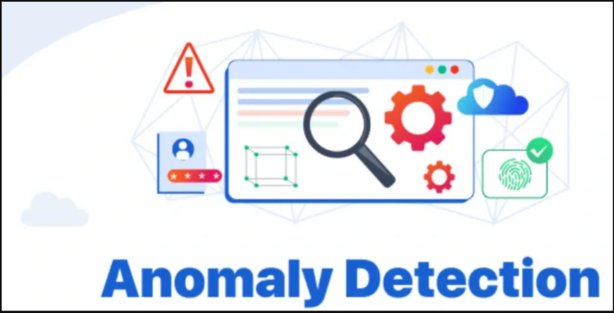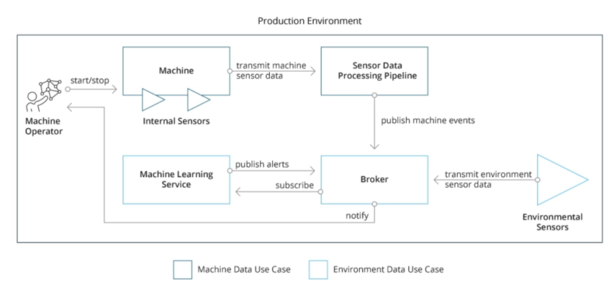How to Use DevOps for Anomaly Detection?

Anomaly detection is the process of identifying unusual patterns or behaviors in system performance, application logs, or user interactions that deviate from expected norms. Detecting these anomalies in real time is crucial in a DevOps environment where speed, reliability, and continuous delivery are prioritized. Anomalies, if not detected promptly, can lead to system failures, performance degradation, or security breaches.
DevOps practices, which emphasize automation, continuous feedback, and collaboration, provide a solid foundation for integrating anomaly detection into every stage of the software development lifecycle. By leveraging DevOps tools and practices, teams can quickly identify and address anomalies before they impact the user experience or business operations. This post will explore how DevOps can be used for anomaly detection, its major features, and practical ways to implement it.

Key Benefits of Using DevOps for Anomaly Detection
Implementing anomaly detection within a DevOps environment offers several advantages. It enables teams to monitor systems continuously, respond to potential incidents quickly, and maintain system stability.
Key Benefits Include:
-
Faster Incident Detection:
-
With automated anomaly detection, DevOps teams can quickly identify performance or security issues without waiting for user complaints or system alerts.
-
Real-time detection ensures that issues are addressed as soon as they arise, minimizing the impact on users and the business.
-
-
Improved System Reliability:
-
By detecting anomalies early, DevOps teams can proactively address potential failures, preventing system downtime and improving overall service availability.
-
Continuous monitoring helps maintain system health, ensuring that the system operates within expected parameters.
-
-
Enhanced Security:
-
Anomaly detection can be used to identify unusual patterns in system logs or user behavior that might indicate a security threat, such as a breach or a DDoS attack.
-
By integrating anomaly detection with security tools, DevOps teams can enhance their proactive security measures.
-
-
Reduced Operational Costs:
-
By automating anomaly detection, DevOps teams can reduce manual monitoring and incident management efforts, allowing them to focus on more strategic tasks.
-
Early identification of issues also helps avoid the high costs associated with system failures or major incidents.
-
-
Continuous Improvement:
-
Anomaly detection provides valuable data for continuous improvement, allowing teams to fine-tune their systems and development processes based on real-time performance insights.
-
Teams can analyze detected anomalies to identify recurring problems and optimize systems accordingly.
-
Tools for Implementing Anomaly Detection in DevOps
DevOps teams use a variety of tools to integrate anomaly detection into their workflows. These tools automate the detection process, visualize data, and provide real-time alerts, enabling teams to act quickly on issues.
Key Tools for Anomaly Detection in DevOps:
-
Prometheus:
-
Prometheus is a popular monitoring and alerting toolkit widely used in DevOps. It collects and stores time-series data and integrates with anomaly detection algorithms.
-
Prometheus can trigger alerts when metrics deviate from predefined thresholds, enabling DevOps teams to detect and address anomalies in real time.
-
-
Grafana:
-
Grafana is an open-source visualization tool that integrates with Prometheus and other monitoring tools. It helps DevOps teams visualize data and detect outliers that may indicate anomalies.
-
Grafana dashboards display trends and metrics that make it easier for teams to spot issues before they escalate.
-
-
Elasticsearch, Logstash, and Kibana (ELK Stack):
-
The ELK Stack is a powerful set of tools for managing and analyzing log data. Elasticsearch indexes and searches logs, Logstash processes them, and Kibana visualizes the data.
-
ELK is particularly useful for detecting anomalies in logs, such as unusual patterns in user behavior or application errors.
-
-
Datadog:
-
Datadog is a cloud-based monitoring and analytics platform that provides anomaly detection through machine learning and data analytics.
-
It automatically identifies deviations in system behavior, such as spikes in error rates or changes in performance, and sends real-time alerts to the DevOps team.
-
-
Splunk:
-
Splunk is a leading platform for operational intelligence that helps DevOps teams monitor, search, and analyze machine data for anomalies.
-
It leverages machine learning and predictive analytics to identify patterns, alert teams to anomalies, and provide insights into potential issues.
-
Integrating Anomaly Detection into CI/CD Pipelines
Integrating anomaly detection into the CI/CD pipeline ensures that issues are detected as early as possible in the development cycle, allowing teams to address them before they reach production.
How to Integrate Anomaly Detection into CI/CD:
-
Automated Monitoring During Builds:
-
Anomaly detection can be integrated into the CI process to monitor build performance, identify failed tests, or detect unusual changes in code quality.
-
Tools like Jenkins, GitLab CI, or CircleCI can be used to trigger alerts if anomalies are detected during build or testing phases.
-
-
Real-Time Performance Testing:
-
Incorporating performance testing tools, such as JMeter or LoadRunner, into the CI/CD pipeline allows teams to monitor the system’s performance under various conditions.
-
Automated tests can detect anomalies related to performance degradation or system resource utilization during deployment.
-
-
Continuous Feedback:
-
Feedback loops within the CI/CD pipeline provide continuous visibility into the performance and stability of new releases.
-
By integrating anomaly detection tools with the pipeline, DevOps teams can receive immediate feedback on any changes in performance or system health.
-
-
Feature Flagging and A/B Testing:
-
Feature flags can be used to enable or disable certain features in the CI/CD pipeline, while A/B testing can help identify anomalies in user interactions or feature performance.
-
These approaches ensure that potentially problematic features can be quickly identified and removed from production before they escalate.
-
Proactive Monitoring and Alerting for Anomaly Detection
Proactive monitoring and alerting are essential for catching anomalies before they impact end-users. DevOps teams need systems in place that continuously monitor system health and provide real-time alerts when something deviates from the norm.
Key Monitoring and Alerting Strategies:
-
Threshold-Based Alerts:
-
Setting predefined thresholds for key performance indicators (KPIs) ensures that when metrics exceed or fall below the acceptable range, alerts are triggered.
-
For example, an alert might be triggered if server CPU usage exceeds 80%, indicating a potential resource bottleneck.
-
-
Machine Learning-Based Alerts:
-
Machine learning algorithms can be used to identify anomalies in large datasets by detecting patterns and trends. These algorithms can automatically adapt to changing system behaviors, reducing false positives.
-
Tools like Datadog and Splunk provide machine learning-powered anomaly detection, making alerts more accurate and reducing noise.
-
-
Root Cause Analysis:
-
Once an anomaly is detected, DevOps tools can integrate with incident management systems (like Jira or ServiceNow) to automatically create tickets and start the root cause analysis (RCA) process.
-
Automated RCA helps teams quickly determine whether the anomaly is caused by a system failure, security breach, or user error.
-
-
Centralized Dashboards:
-
Dashboards provide a centralized view of all monitoring data, making it easier for DevOps teams to spot anomalies across different systems or services.
-
Tools like Grafana or Kibana allow teams to visualize system behavior and track key metrics in real-time.
-
Continuous Improvement and Optimization through Anomaly Detection
Anomaly detection not only helps teams address immediate issues but also contributes to continuous improvement by providing data-driven insights into system performance and reliability.
Using Anomaly Detection for Continuous Improvement:
-
Analyzing Patterns Over Time:
-
By collecting and analyzing historical data, DevOps teams can identify recurring anomalies or patterns that need to be addressed in future releases.
-
This data-driven approach allows teams to make informed decisions about scaling, refactoring, or optimizing applications.
-
-
Iterative Performance Optimization:
-
Anomalies often highlight areas of the system that need optimization, such as performance bottlenecks, security vulnerabilities, or inefficiencies.
-
Continuous monitoring and anomaly detection help teams prioritize improvements and make incremental changes to optimize system performance.
-
-
Automation of Remediation:
-
By integrating anomaly detection with automation tools like Ansible or Puppet, DevOps teams can automatically resolve issues when anomalies are detected, reducing the need for manual intervention.
-
Automated remediation ensures that systems remain healthy without unnecessary delays.
-
Leveraging DevOps for Effective Anomaly Detection
DevOps practices are key to setting up efficient and effective anomaly detection systems that proactively identify issues in production. By integrating continuous monitoring, automated testing, and machine learning algorithms into DevOps pipelines, teams can detect anomalies early, resolve issues quickly, and continuously improve system performance.
Using DevOps for anomaly detection not only helps in preventing downtime and system failures but also enables teams to optimize applications, enhance user experience, and improve security. With the right tools, integration strategies, and feedback loops, anomaly detection becomes an essential part of DevOps workflows, contributing to the overall success and reliability of applications.
The post How to Use DevOps for Anomaly Detection? appeared first on Best DevOps.
Go to Source